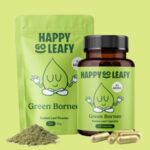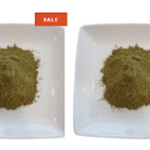The quest for better health features prominently among the latest lifestyle trends. Such lifestyle adaptations and modifications include adding natural wellness remedies to daily routines.
Kratom is among the most popular herbal remedies in natural wellness circles. The herb’s prevalence is on the rise in Canada, although more data is necessary to ascertain the number of Canadian adults taking it.
So, what is kratom, and how does it impact natural wellness? Below is the ultimate guide to kratom and its potential healing power for natural wellness.
What Is Kratom?
Kratom, scientifically known as Mitragyna speciosa, is an herbaceous tree native to Southeast Asia, whereby the natives have used its leaves to harness therapeutic benefits for centuries. Traditional kratom consumption use in its native Southeast Asia entailed chewing the leaves.
However, its leaves have a bitter, acrid taste that is too much of an acquired taste for most consumers in the Western world, including Canada. Therefore, the herb is available in Canada in more palatable forms, including gummies, powders, teas, capsules, and edibles. You can check out bckratom.com to purchase high-quality kratom products online in Canada, particularly in British Columbia.
Kratom gained entry into the Western world barely a decade ago but is gaining popularity due to its therapeutic potential inducing calm and relieving pain.
Here is how it works.
How Does Kratom Work: Kratom Mechanism Of Action
Like all therapeutic herbs, kratom contains an active ingredient that modulates specific body functions to induce targeted therapeutic effects. According to one report highlighting kratom’s drug profile, the herb has approximately 40 identified indole alkaloids. However, its primary alkaloids are mitragynine and 7-hyroxymitragynine.
Kratom is an atypical opioid; hence its primary bioactive compounds, mitragynine and 7-hydroxymitragynine, can induce their therapeutic benefits by stimulating the endogenous opioid system. The endogenous opioid system is a pathway modulating nociceptive (pain signals) and features transmitters or signaling molecules scattered throughout the nervous system and body organs. However, besides nociception (pain sensation) transmission, the endogenous opioid system modulates other physiological and psychological functions, including motivation and reward, the fight-or-flight response, immunity, and endocrine functions.
One may be wary of kratom because it interacts with the endogenous opioid, similar to other opioid substances that cause drug dependency. However, one kratom pharmaceutical review suggests that kratom may act as an atypical opioid.
Typical opioids like codeine and morphine are full receptor agonists, meaning that they mimic the activity of specific neurotransmitters to induce targeted effects. However, kratom’s primary alkaloids are partial agonists, meaning they only bind partially to target receptors.
Kratom utilizes opioid and non-opioid mechanisms to induce its potential therapeutic benefits and does not bind directly to opioid receptors. Therefore, it is unlikely to trigger the excessive endogenous opioid system stimulation likely to trigger the drug dependency synonymous with typical opioids.
Top Five Potential Health Benefits Of Kratom For Natural Wellness
1. Kratom Can Help Relieve Pain
Based on the findings from the survey highlighted above, pain relief is kratom’s most prominent use. 91% of respondents self-reporting using herbal remedies for its analgesic properties.
As stated earlier, kratom’s mechanism of action entails interacting with opioid system receptors, and the opioid system regulates pain signals. Therefore, kratom consumption suppresses pain signals, bringing relief to patients experiencing chronic pain.
Chronic pain is the kind of nociceptive sensation that continues without an apparent cause, causing patients perpetual discomfort and disrupting their quality of life. However, one study on kratom and its alkaloids established that 7-hydroxymitragynine, one of kratom’s primary alkaloids, is 13 times more potent than morphine. Moreover, as stated above, unlike morphine, kratom is unlikely to trigger opioid dependency.
2. It May Ease Anxiety And Depression Symptoms
According to a report by the Mental Health Foundation, mixed anxiety and depression are the most prevalent mental health disorders. Consequently, anxiety relief and managing depression symptoms are kratom’s second most prominent use.
Kratom can help with anxiety relief and acts as an antidepressant. According to one study, the mitragynine in kratom binds to dopamine and serotonin receptors (two hormones influencing mood and calm) to induce its anxiolytic and antidepressant effects.
The mitragynine may induce a euphoria that quells ruminating thoughts, boosts mood, and increases calm, confidence, and sociability.
3. May Improve Sleep Quality
Sleep is an essential yet underrated well-being element. It affects various physiological and psychological functions, including healing, appetite, heart health, memory consolidation, stress hormone regulation, mood, and alertness. Sleep deprivation is a risk factor for mental health disorders and metabolic diseases.
However, sleep disorders like insomnia and other health issues like anxiety, depression, and chronic pain can lower sleep quality, compromising your health. Fortunately, the potential sedating effects of kratom can help you sleep better. However, be wary of the dosage and ask experts for recommendations.
4. Can Provide Energy-Boosting Properties
Kratom is a natural stimulant from the coffee family, inducing an energy boost at low doses. Therefore, it can be a perfect pick-me-up to overcome physical fatigue and improve alertness. However, kratom is a sedative at high doses.
5. Potential Anti-inflammation Properties
Besides being a potent analgesic, one study established that kratom’s mitragynine has powerful antiinflammation properties. Inflammation is essential to the immune process and occurs as the lymphocytes (white blood cells) migrate to the target area to fight invading pathogens and other foreign bodies.
However, inflammation without apparent cause damages healthy cells and tissue and is involved in the pathogenesis (development) of various diseases, including type 2 diabetes and neurodegenerative diseases. Fortunately, kratom’s antiinflammation properties can help slow down inflammation disease progression.
Kratom Dosage
Kratom is an unregulated substance, meaning no standardized dosage for specific therapeutic benefits exists. Moreover, it occurs in different stains, each with a unique dominant therapeutic benefit.
Nonetheless, kratom is bi-phasic or induces opposite effects at high and low doses. Therefore, start with low doses and adhere to the seller’s dosage recommendations.
Conclusion
Kratom has immense potential as a natural remedy with powerful therapeutic benefits that promote healing and overall wellness. However, ensure you exclusively purchase lab-tested kratom products from trustworthy vendors.







